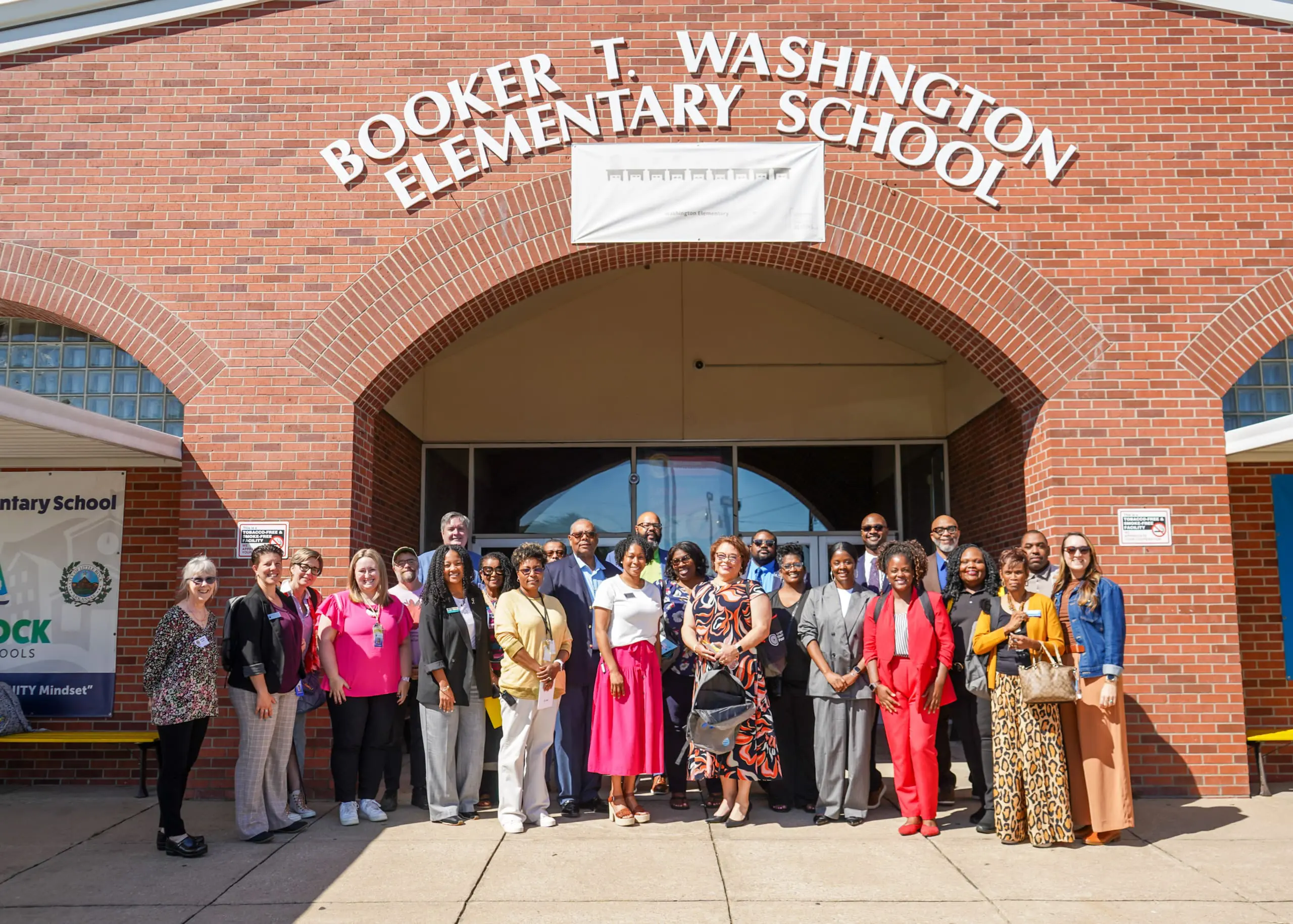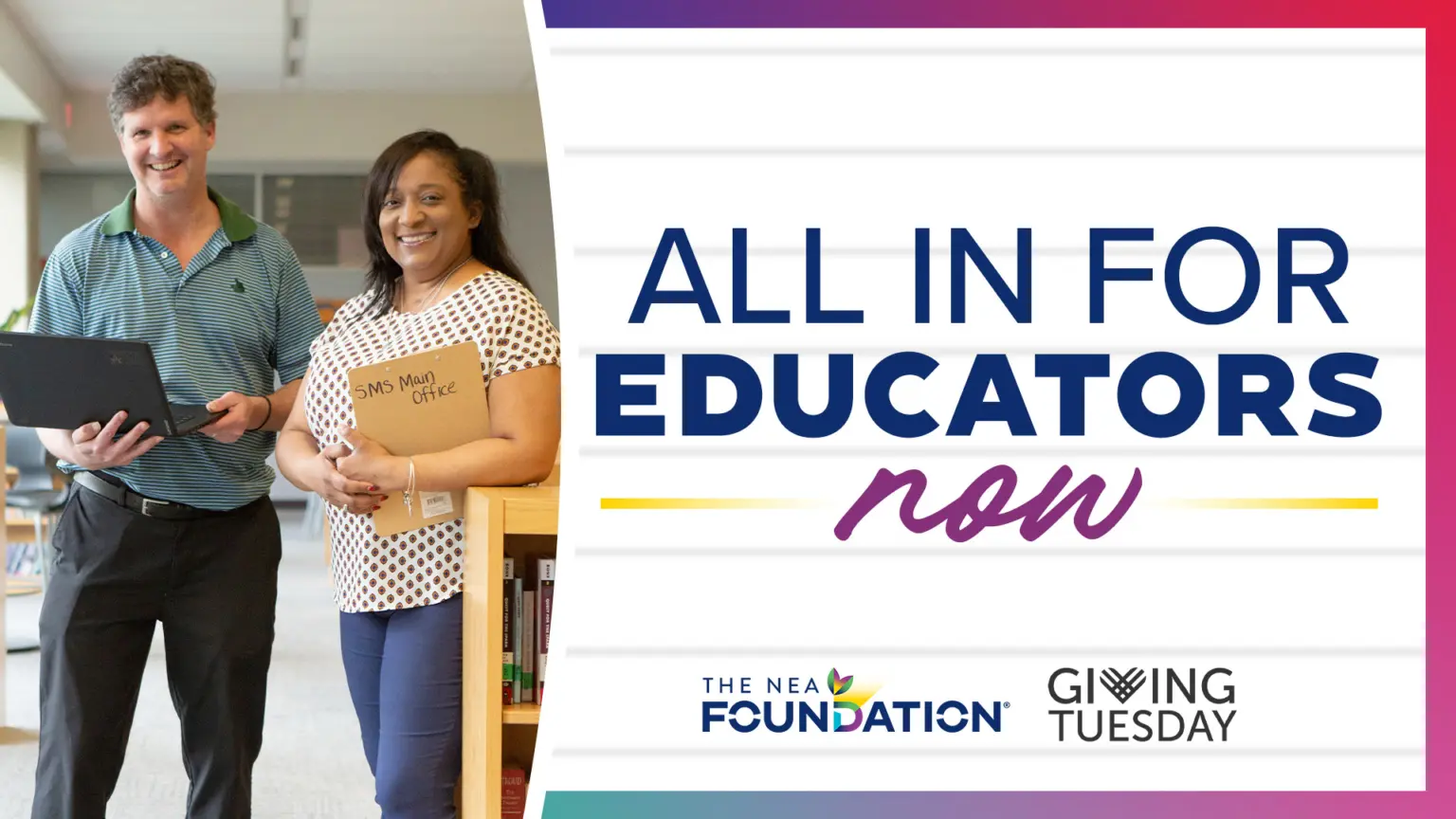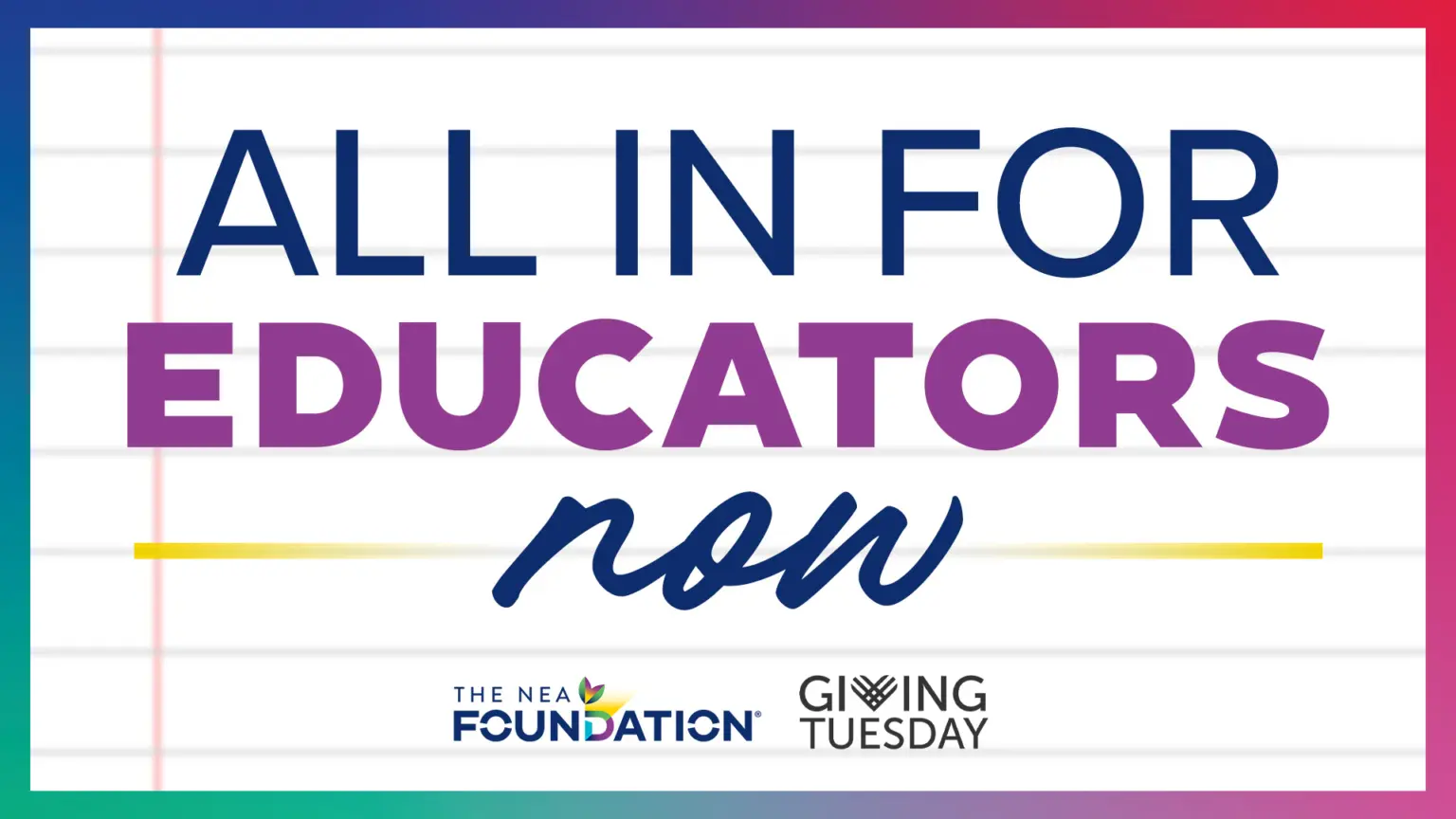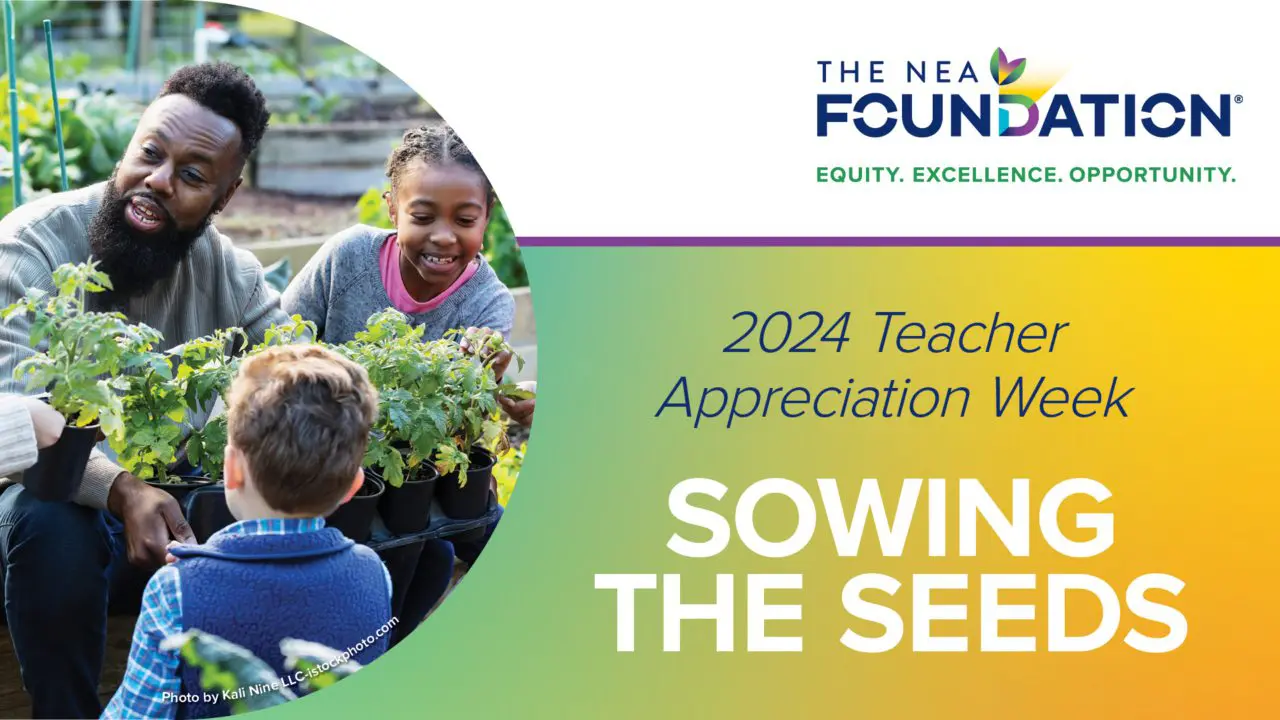October 30, 2024: Last month, a group of more than sixty individuals from across Arkansas and Mississippi—a region known as the Deep South—gathered in Little Rock, Arkansas for a common purpose: to deepen their understanding of how to serve their various communities through the community schools strategy.
The convening was the bimonthly Southern Regional Alliance for Community Schools meeting, also known as SRACS. The SRACS network is comprised of community leaders, educators, social workers, elected officials, and more, each representing a community school site receiving support from The NEA Foundation as part of the Community Schools Initiative.
SRACS and the Community Schools Initiative
The formation of SRACS was a byproduct of The NEA Foundation’s Community Schools Initiative, which launched in 2020. The initiative seeks to enhance education equity, student experiences, and educational outcomes through the community schools strategy. Community schools close opportunity gaps by providing needed academic and other resources to students and families. In addition to meeting basic needs such as access to food or healthcare, community schools foster greater connectivity and support systems within a community through partnerships with local nonprofit organizations, businesses, local government entities, and individuals.
The NEA Foundation’s Community Schools Initiative presently focuses on the Deep South, one of the most under-resourced regions of the country. Among the many inequities expressed in the Deep South, the region has the highest poverty rates in the country, the highest rates of food insecurity, and some of the lowest levels of healthcare access.
The Convening in Little Rock
The individuals, groups, and organizations that comprise the SRACS network met on the morning of Thursday, September 26 at a City of Little Rock community center. President and CEO of The NEA Foundation Sara A. Sneed gave welcome remarks in which she expressed gratitude to the group for their ongoing commitment to serving students and communities. Brief introductory remarks were also given by Superintendent of Little Rock School District Dr. Jermall Wright, City of Little Rock Chief Education Officer Jennifer Glasgow, and NEA Foundation Program Officer for Community Schools Jazz Cleark.

NEA Foundation Program Officer for Community Schools Jazz Cleark speaks to the SRACS group in Little Rock
The main activity of the day was simple, yet deeply meaningful: Attendees divided into three different groups, each of which travelled by school bus to one of three community school sites within the Little Rock School District. While the SRACS participants had gone on previous “learning journeys” to visit and learn from exemplar community schools throughout the country, this was the first such journey to visit community schools developed by members of the SRACS network themselves.
Each participant was given a learning journal where all were encouraged to record and reflect on their experiences.
“This is a learning community,” Cleark emphasized to the group, encouraging them to ask critical questions about the school programs and services they encounter. “Who are the partners? What needs are being met, academically and otherwise?”
Chicot Elementary School & Early Childhood Center
One group of SRACS members visited Chicot Elementary School & Early Childhood Center. Now in its fourth year of operating as a community school, Chicot was one of the district’s pilot community school sites.
One of the ways Chicot Elementary School & Early Childhood Center meets the needs of students is through the healthcare clinic located directly on campus. Retrofitted into an existing wing of the school building with support from The NEA Foundation, the clinic includes a doctor’s office where students receive well visits and immunizations, a mental health office where students can meet with a school counselor, a dental office, and an optometry office where a local optometrist sees up to 12 students per week. Students who need glasses, who comprise nearly 90 percent of those who come in for eye exams, can pick out two sets of frames and receive up to one pair of replacement glasses per year—all at no cost to their families.
“We have families that aren’t insured and are not able to get insurance, and we waive fees for anyone in that position,” said Chicot Health Clinic Manager Jamie Combs. “It makes a huge difference for parents to know that their child can get immunizations and well visits and even glasses, and they don’t have to stress about a bill coming.”
School counselor Adrienne Hawkins stressed the value of students having easy access to mental health services.
“As a school counselor, it feels good to know that all kids, no matter their financial status, can receive mental health support,” Hawkins said. “Prior to the community schools model, I would be on the phone for hours trying to find resources for students. Now, with the community schools model, it’s instant. I can connect students with the support they need in less than 24 hours. It helps tremendously to know that with the support I have, I’m going to be able to get resources for our families.”
The Chicot Health Clinic sees students from across the Little Rock School District and their siblings. In the 2023-2024 academic year, the clinic treated about a thousand students. More than a third of the students the clinic sees are uninsured. Multilingual staff make health care accessible and approachable to students and families of diverse backgrounds. The clinic also has two entry points. An entrance from inside the school building allows for Chicot Elementary students to come to the clinic straight from class, while another entrance is accessed from a school parking lot, so that parents can easily bring in or pick up their child.
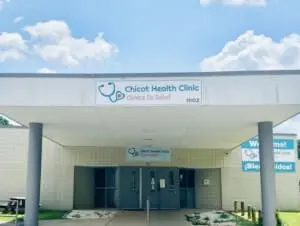
The outdoor entrance to the Chicot Health Clinic
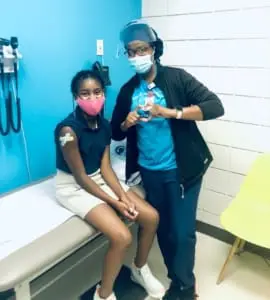
A student receives health care at the Chicot Health Clinic
In a 2023 report by the Commonwealth Fund, states in the South were given the lowest rankings on a scorecard of health system performance, with Arkansas and Mississippi among the lowest ranked states in the country. Scores were based on a range of factors, including access to adequate healthcare and insurance. The report also found that nearly a quarter of residents in the South had medical debt, a symptom of coverage gaps and inadequate health insurance.
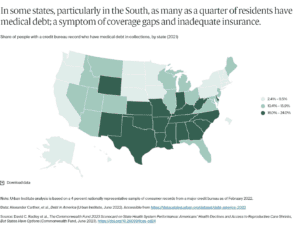
Clinics like the one at Chicot Elementary School are a highly effective way of closing gaps in healthcare access so families, communities, and schools can thrive.
Booker T. Washington Elementary School
A second group of SRACS members traveled to Booker T. Washington Elementary School, another community school site in the Little Rock School District.
One highlight of the programs at Booker T. Washington Elementary is the student-operated bank. Through a partnership with First Security Bank, an Arkansas-based financial institution, the elementary school houses a mock bank branch called the Booker T. Washington Elementary Bank. Through the program, students open mock bank accounts in their names, learn how to fill out deposit slips, act as bank tellers, and even take on roles like security guard and branch manager. Each account opened receives a small initial deposit from First Security Bank, and the program encourages parents and families to add to their savings balance. Through this incentive program, families of Booker T. Washington Elementary School students have collectively saved over $100,000.
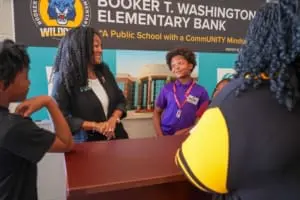
A student acts as bank teller at the Booker T. Washington Elementary Bank
Communities in the Deep South suffer from some of the most extreme levels of generational poverty in the country. According to 2023 data from the U.S. Census Bureau, 16.8 percent of people living in Arkansas are in poverty. This constitutes one of the highest poverty rates in the country, far surpassing the national average of 12.5 percent. While generational poverty is a more complex issue than personal savings alone can address, financial education and savings incentivizing programs are no doubt one part of the solution.
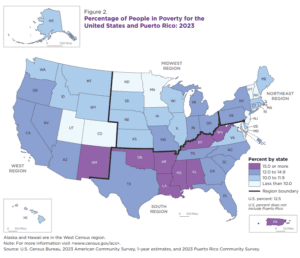
NEA Foundation Communications Officer Stephen-Michael Thompson was impressed by the leadership and engagement of students at the school, who led the tour for SRACS visitors.
“It really stood out to me that the students led the tours,” Thompson said. “Usually during school visits, you see school administration or people of higher rank leading the tour, but here, they put the students at the forefront.”
After the tour, SRACS attendees participated in a Q&A with a panel of school and community members involved in the school’s programming. The panel included local business owners, social workers, school administrators, and educators.
“People from across the community are involved in a very hands-on way,” said Thompson. “It really demonstrates that when communities are involved in shaping student experiences, schools can be extremely successful on a lot of different levels.”
McDermott Elementary School
The third SRACS group visited McDermott Elementary School, a centrally-located school whose community schools model is the newest of the three.
One of the methods McDermott Elementary School is implementing to address student needs focuses on food insecurity. The Deep South suffers from disproportionate levels of food insecurity, with Arkansas ranking number one in the nation in prevalence of food insecure households, according to the U.S. Department of Agriculture.
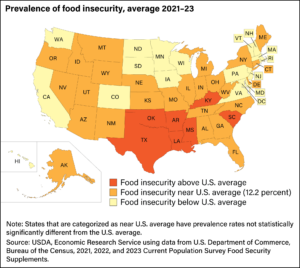
To address food insecurity experienced by students and families, McDermott Elementary School keeps a well-stocked food closet with bags of groceries that students can take home. A local ministry, the Church at Rock Creek, delivers additional food bags for students at the school on a regular basis. The school also participates in Kroger’s Zero Hunger: Zero Waste program, which helps supply food to families on request, such as during emergency situations. Additionally, a FoodCorps member based at the school helps students build greater understanding of nutrition through classes that center on gardening, the importance of healthy cuisine, and how to create farm-to-table meals.
Nearly 100 percent of McDermott’s student population qualifies for free or reduced meal plans, a qualification based on the federal poverty line. Because the need for food is so pronounced, McDermott Elementary School’s food closet accepts surplus donations from other community school sites when possible.
“Since becoming a community school, we’ve really stepped up efforts to provide food assistance,” said Community Schools Site Coordinator Sky Brower. “Recently, we had an opportunity to get food distributions from another site that had a surplus, and within two minutes of posting about it on social media, the phone was ringing with requests. We now have a total of 13 families signed up for extra food distributions as long as supplies last, and we aren’t certain how long we’ll be able to continue receiving the surplus stock. But as long as possible, I’ll be traveling to that site to help pack up food bags.”
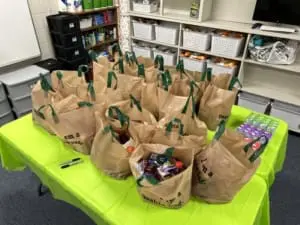
Bags of groceries prepared for families of McDermott Elementary School
The school also plans to begin hosting regular “Community Cafés,” which are community events that provide free hot meals to families, grocery giveaways, free health screenings, meetings with mental health professionals, and a chance to mingle with community members. As with all community schools, the idea is to invite the community to share in resources so that everyone’s needs can be met.
Vice President of Policy and Communications at The NEA Foundation Reginald Ballard described the visit to McDermott Elementary as “a full circle moment” for him. Having formerly served as Chief of Staff of the Little Rock School District, Ballard is very familiar with each of the schools and has seen the transformations that have taken place in recent years.
“As someone who was on the exploration team thinking about how we could bring community schools to Little Rock, and went on site visits across the country to learn how other community schools were accomplishing such incredible things, seeing that today, the Little Rock School District is being visited by others and used as an example of what community schools can do and be—it’s a full circle moment.”
Student Well-Being and Academic Success
Community schools aren’t only about improving student experiences; the strategy has also been proven to positively impact student achievement by addressing both academic and non-academic needs that are critical for success. A report by the Learning Policy Institute found that high-quality community schools have a positive impact on student achievement, with 87 percent of community schools showing gains in reading and math test scores, increased attendance rates, and higher graduation rates.
The community schools in the Little Rock School District, all of which adopted the community schools model in recent years, are already beginning to see these benefits. Prior to the implementation of the health clinic at Chicot Elementary School, students with undiagnosed myopia would achieve lower scores year after year because they couldn’t see clearly. Today, vision problems among students at the school are diagnosed and treated promptly, preventing student scores from needlessly suffering.
“We have three years of data showing that our academics have improved since the healthcare clinic has been in place,” said Combs.
Principal of Booker T. Washington Elementary School Aleta Posey noted that while it can be difficult to attribute improvements in student achievement to any single cause, overall, student scores have improved.
“We know that when student’s needs are being met, they are better able to focus on learning,” said Posey. “Before we even get into the academics, we have to make sure students are ready to receive it. They aren’t ready to receive it if their basic needs are not met or they’re experiencing some kind of trauma. That’s one thing we’re trying to do with community schools, is make sure we’re meeting their needs, from a whole-child perspective, so they can be more successful.”
The Road Ahead
The community school sites at the Little Rock School District are far from being complete. Each site has plans for further meeting the needs of every student, and no two plans are the same. During the last few hours of the SRACS meeting, all attendees went through an intensive data training to help them understand how data can help them track progress and identify gaps in programming. At the end of the training, they traveled back to their respective community school sites, scattered throughout Arkansas and Mississippi, to bring their reflections and findings into their own communities.
The NEA Foundation’s Community Schools Initiative also has plans for its road ahead. The initiative has strategically focused its efforts on the Deep South, and ultimately, President and CEO of The NEA Foundation Sara A. Sneed has ambitions of investing in community schools in Indigenous communities and Appalachia. The vision that every child should have access to the resources they need and a community that comes together in service of their well-being is one that tends to be shared by those who have experienced community schools in action.
“I want every child to have this kind of experience,” said Chicot Elementary School Principal Gina Khoury. “I think what we have here is very special, and it breeds collaboration, and when kids see that, they begin to embody those traits too. Harnessing the power of the community means that we can all pour together into the lives of our kids so they can be their best, and they can do the same thing for others.”
A student of Chicot Elementary School, when asked what they liked most about the community schools model, didn’t hesitate to answer. “It just brings everybody together. Everyone is everyone’s friend.”
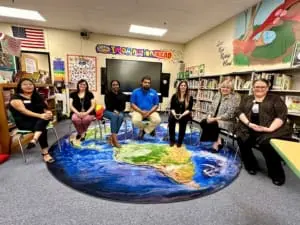
From left to right: Valentina Simon, SNAP Outreach Specialist at Arkansas Hunger Relief Alliance; Sheree O’Rorke, Music Educator at Chicot Elementary School; Adrienne Hawkins, School Counselor at Little Rock School District; Prostell Thomas, Community Partnership Programs Coordinator at Little Rock Zoo; Gina Khoury, Principal at Chicot Elementary School; Tammy Blaylock, Coordinator for Volunteers in Public Schools at Little Rock School District; Jaime Combs, Clinic Manager at Chicot Health Clinic

